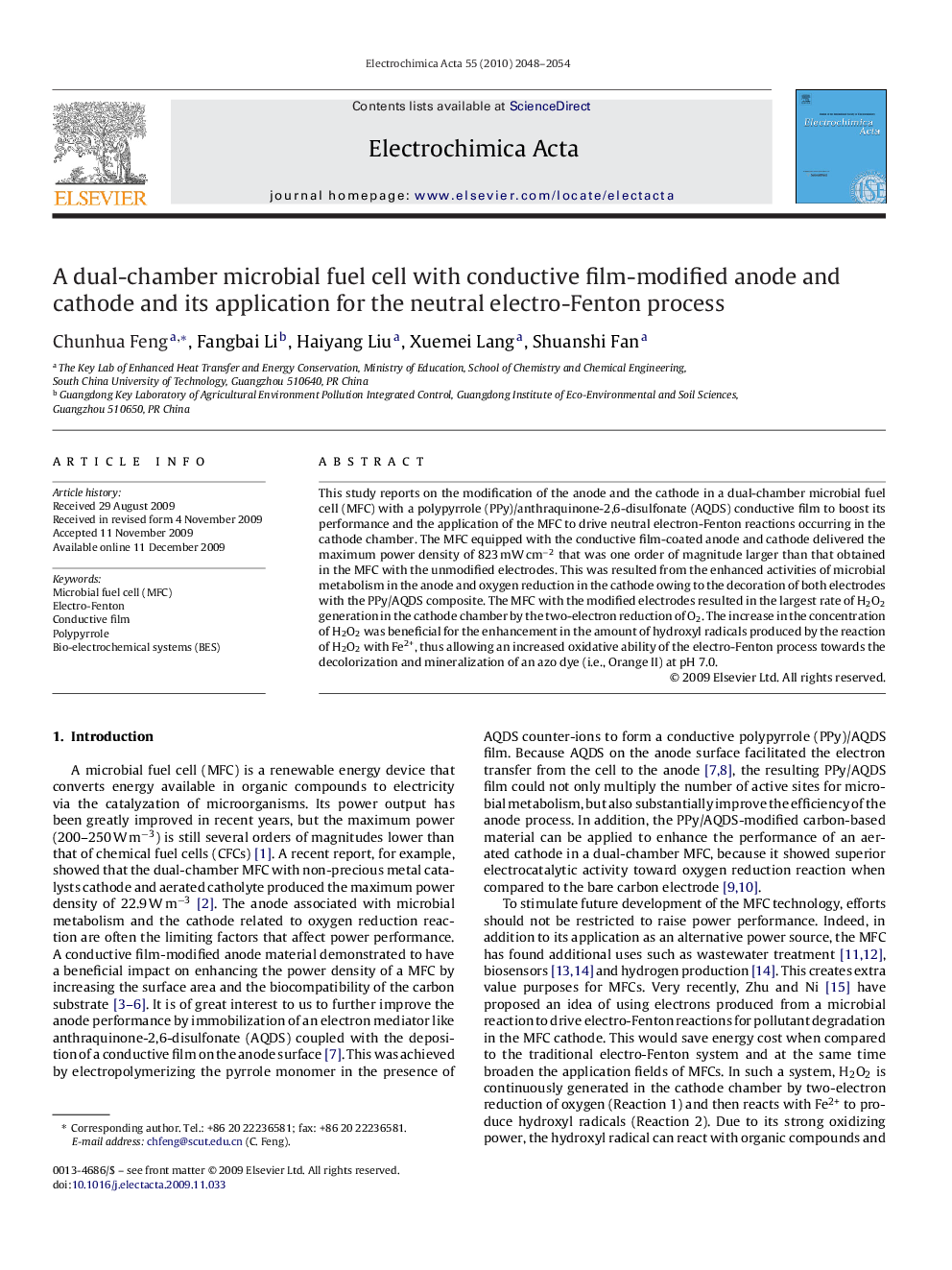| Article ID | Journal | Published Year | Pages | File Type |
|---|---|---|---|---|
| 191774 | Electrochimica Acta | 2010 | 7 Pages |
This study reports on the modification of the anode and the cathode in a dual-chamber microbial fuel cell (MFC) with a polypyrrole (PPy)/anthraquinone-2,6-disulfonate (AQDS) conductive film to boost its performance and the application of the MFC to drive neutral electron-Fenton reactions occurring in the cathode chamber. The MFC equipped with the conductive film-coated anode and cathode delivered the maximum power density of 823 mW cm−2 that was one order of magnitude larger than that obtained in the MFC with the unmodified electrodes. This was resulted from the enhanced activities of microbial metabolism in the anode and oxygen reduction in the cathode owing to the decoration of both electrodes with the PPy/AQDS composite. The MFC with the modified electrodes resulted in the largest rate of H2O2 generation in the cathode chamber by the two-electron reduction of O2. The increase in the concentration of H2O2 was beneficial for the enhancement in the amount of hydroxyl radicals produced by the reaction of H2O2 with Fe2+, thus allowing an increased oxidative ability of the electro-Fenton process towards the decolorization and mineralization of an azo dye (i.e., Orange II) at pH 7.0.
